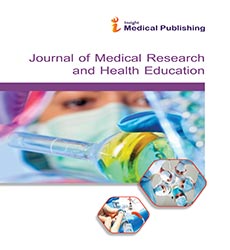Prognostic Value of Venous to Arterial Carbon dioxide. Difference during Early Resuscitation in Critically ill Patients with Septic Shock
Abstract
Objective: In this study, we investigated the prognostic value of venous-to-arterial carbon dioxide difference during early resuscitation of patients with septic shock and compared it with that of lactate clearance and APACHE II score.
Methods: This prospective study enrolled 40 patients admitted to the Critical Care department, Alexandria University, and fulfilled the diagnostic criteria of septic shock. Patients were followed for six hours from admission. These patients were subjected to complete history taking, detailed physical examination, APACHE-II Score of patients was calculated on admission, routine laboratory investigations were carried out on every patient, an arterial blood gas (ABG) sample was obtained and another central venous sample (VBG) was obtained on admission, and after 6 hours. The hemodynamic and respiratory variables were registered at each measurement. Venous to arterial CO2 difference (Pv-aCO2) or PCO2 gap was calculated as the difference between the central venous CO2 partial pressure and the arterial CO2 partial pressure. A Pv-aCO2 value ≥ 6 mmHg was considered to be high. The patients were classified into survivors group or group I and non-survivors group or group II. The PV-aCO2 difference in the two groups was evaluated. Lactate level was measured on admission and after 6 hours and lactate clearance was calculated. Patients were managed according to the latest surviving sepsis campaign guidelines and patients were followed till death or discharge from ICU the following parameters were recorded: the need for mechanical ventilation and its duration, days of vasopressor need, application of renal replacement therapy, and days of ICU stay.
Results: On admission (T0), the non-survivors group or group II showed high PCO2 gap (8.37 ± 1.36mmHg) than the survivor's group or group I (7.55 ± 0.95 mmHg) with the significant statistical difference (P=0.030). There was no significant statistical difference between the two groups according to serum lactate where both groups showed high lactate values at T0. While after 6 hours(T6), group II showed a higher PCO2 gap (9.48 ± 1.47mmHg) with a significant statistical difference (P 7.8 or APACHE II score on admission >25 while that of lactate clearance that predicts mortality was 11% with 100% sensitivity, specificity, PPP and NPP.
Conclusion: The persistence of a high PCO2 gap > 7.8 mmHg after 6 hours from resuscitation of septic shock patients is associated with high mortality and so the PCO2 gap could be used as a marker of mortality in septic shock.
Open Access Journals
- Aquaculture & Veterinary Science
- Chemistry & Chemical Sciences
- Clinical Sciences
- Engineering
- General Science
- Genetics & Molecular Biology
- Health Care & Nursing
- Immunology & Microbiology
- Materials Science
- Mathematics & Physics
- Medical Sciences
- Neurology & Psychiatry
- Oncology & Cancer Science
- Pharmaceutical Sciences
